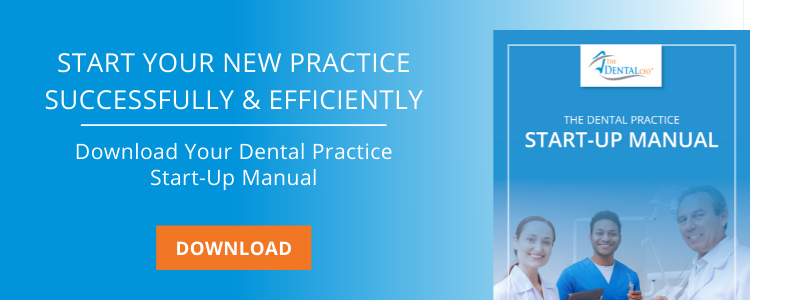AUTHOR: The Dental CFO
April 25, 2023
You practice dentistry because you enjoy helping patients. At the same time, you went into business to make a profit. What happens when you discover that a trusted employee is stealing your profits?
Think it can’t happen to you? Think again … unfortunately, no one is immune. In this article, you will learn to recognize the profiles and modus operandi of embezzlers, safeguards you can implement to protect your practice from being an easy target, and what to do if you discover that you are a victim of embezzlement.
What Is Embezzlement?
Embezzlement is a form of financial fraud. It occurs when someone who has been given access to money or assets for a specific purpose or on behalf of someone else, intentionally takes and uses it for their own purposes without authorization or consent.
Embezzlement can be committed in various ways, including falsifying records, creating fraudulent invoices, or simply taking cash from a cash register. It is considered a serious crime and can result in criminal charges and severe penalties, including imprisonment and fines.
What Does Embezzlement Cost?
While the monetary cost speaks for itself, even more devastating are the emotional and physical costs. The following wreak havoc in the victim’s life:
- Destroyed trust
- Time spent in discovery and recovery
- Legal fees
- Bad press
- Shattered relationships
- A damaged reputation
- Lost patients
- Lost revenue

The stress of dealing with all aspects of employee embezzlement has been shown to create health and emotional issues, simply because the broken trust led to a broken heart. The experience is gut-wrenching and emotionally heartbreaking.
Think Embezzlement Won’t Happen to You?
You have invested a substantial amount of time and money in equipment and operations, and are responsible for the essential policies and procedures necessary to operate and control a viable business.
Unfortunately, your caring and trusting personality, which is a necessity for being a good practitioner — as well as the lack of business training received during dental school, internship, and residency programs — do not properly prepare you to handle all the associated business tasks of the job.
These factors place you and your practice at a much greater risk to experience embezzlement at some point during the life of the practice. Fraud and embezzlement in healthcare practices are increasing at an alarming rate.
Why Are Healthcare Practices Particularly Susceptible to Embezzlement?
The average practice consists of a close-knit group of people. The majority of these team members come to know each other and the dentists quite well. This familiarity may lead to a lack of instituting strict business principles, policies, procedures, and controls.
This lack of control, mixed with the daily flow of cash and checks, and a lack of supervision, can set the practice up as the perfect victim for a potential embezzler.
Who Embezzles?
Anyone who is a direct employee or an extension of your practice is a suspect for embezzlement.
As you review your practice and employees, you never want to believe that the people whom you trust and rely on would ever betray you. But beware — embezzlers come from all walks of life, from the lowest to the highest-paid employees, including some who might surprise you. Reported instances of embezzlement include:
- Employees taking cash payments
- Office managers taking patient checks
- Office managers paying personal bills
- Spouses and family members taking from other family members
- CPAs diverting funds
- Even the dentist stealing from the practice
In most cases, the embezzler has gained the trust and confidence of the person or practice being defrauded. Your high level of trust and confidence enables that employee not only to commit but also to continue to steal and conceal the theft, using deception and schmoozing to commit the crime.
Most often, an embezzler’s intent is to “borrow” a small amount of money and repay it soon afterward. Unfortunately, the “borrowed” money is rarely returned. In fact, the employee continues to “borrow” from the practice.
Once the crime is committed and continues to be undetected, the employee eventually increases embezzlement activities and the amounts taken. The employee becomes more confident that the missing funds will remain undetected. Subsequently, greed takes over.
Next, the employee assumes an attitude of entitlement. Many times the employee feels the dentist makes too much money and “owes” the employee. The embezzler truly believes that the office would not be able to function without them. They also believe they’re responsible for the dentist’s high income being created in the practice.
As the embezzlement continues, the employee becomes more and more dependent upon “the extra income.” Most embezzlers spend the money to elevate their lifestyle or for potentially gambling and/or drugs. Over time, the embezzler’s over-confidence gives way to carelessness in concealing the theft, which eventually leads to the detection of the crime.
What Are the Red Flags for Embezzlement?
Employers must be aware of certain behaviors indicative of an embezzler’s profile. This awareness can minimize your risk. Warning signs include:
The Overly Loyal Employee
Be vigilant to employees who always appear to be going beyond the call of duty. Their behaviors typically include:
- Arriving to work early and/or staying late on a regular basis.
- Constantly working overtime, taking work home, and seldom being absent.
- Refusing or declining to take scheduled vacations (or may take only a day or two off when the dentist is out of the office).
- Taking accounting work home.
- Stirring dissension in the office. The embezzler may bad-mouth the dentist for paying low wages or bonuses or complain about other staff members being incompetent. Be wary of employees who stir up drama, bad feelings, or negativity in the practice by routinely complaining about their co-workers or their boss.

Employee Lifestyle Change
Be cognizant when an employee’s lifestyle changes from that of a struggling employee to one who suddenly seems to be enjoying a higher standard of living. The employee may be experiencing:
- A deteriorating financial condition, including that of his/her spouse becoming unemployed, etc.
- Emotional stress about family or personal financial problems, including separation or divorce.
- Involvement with a spouse, significant other, or close family member who is an alcoholic, drug addict, or gambler. Each of these issues creates severe financial pressures and burdens for the employee.
- Resentment of the dentist’s income or lifestyle.
- Being bothered by the level of fees charged.
- A sudden change in spending habits.
The All-Controlling, Always-Has-An-Excuse Employee
This employee wants full control over all financial aspects of the practice. When something falls through the cracks or does not get completed, they always have an excuse. This employee tries to convince the dentist that outsourced professional assistance with a CPA or consultant is an unnecessary expense.
Behaviors typical of this scenario include:
- Insisting on handling all office financial responsibilities alone.
- Forgetting to “follow procedures” or having “no time” to post books.
- Not adhering to standard office procedures or protocols.
- Offering excuses for not getting the day’s activities posted or completing the daily close.
- Maintaining sloppy records that contain erasures, jumbled or illegible data, entries, etc.
- Showing open resentment at any oversight or supervision of their work.
- Becoming angry or resentful when any new financial controls are implemented.
- Resisting any changes in the office accounting system. This usually surfaces and is met with rebuttal when the change involves the upgrade or replacement of an outdated system with a newer, easier, more efficient one.
- Not reconciling bank statements with the checkbook register accurately.
- Blaming discrepancies on the computer or software program.
Practice Financial Changes
In addition to specific behavioral actions by employees, changes in other practice financial activities can be a flashing warning signal:
- You receive multiple patient complaints regarding discrepancies in their bills.
- Without apparent explanation, your accounts receivable increase.
- Conversely, without apparent reason, your collection ratio decreases.
- You are asked to regularly write checks to a new supplier whom you have never met.
- Office supplies and dental inventories seem to be used at an increased rate when the patient census or flow has not proportionately increased.
- The employee is ambitious and enthusiastic about collecting on overdue accounts and may employ high-pressure telephone solicitation techniques, yet the results are not fruitful.
- You are paying more overtime than usual to the staff, but the work is still not current.
- A former employer gives the employee a negative reference.
- Not reconciling bank statements with the checkbook register accurately.
- An employee who handles financial affairs suddenly quits or disappears without notice or explanation.
What Is an Embezzler’s Modus Operandi?
Embezzlement methods range from “forgetting” to pay back the petty cash box to very elaborate schemes that cover up significant monetary theft. Below are some of the more commonly reported tactics:
- The employee takes a cash payment from a patient and does not post the charge or payment.
- The employee takes a cash payment, pockets the funds, then posts a “write-off” to the charge. Similarly, the employee may code the write-off as a “discount”.
- The employee gives a patient a falsified receipt for a payment that was made.
- The employee steals patient statements so patients who paid cash (which got pocketed) do not get a bill showing an outstanding balance.
- Falsifying expenses and expense accounts.
- The employee gives a busy dentist a stack of checks to sign and includes an extra one. The extra one can be a duplicate payment for which the embezzler will attain and pocket the refund. Alternatively, it may be made out to a bogus supplier and deposited in the embezzler’s account. Some embezzlers have brazenly made the checks out to themselves.
- The employee issues a refund check made out to a fictitious patient after creating a bogus account under that name.
- The employee substitutes an insurance check payment for cash taken and does not post the insurance payment.
- The office uses a rubber stamp with the dentist’s signature, making it easier for the employee to make a check (or paycheck in some cases) out to themself.
- The employee submits insurance claims for fictitious payments or treatment and then pockets the payment on the claim.
- The employee alters the payroll by doubling or tripling the FICA (Federal Insurance Contributions Act) withholding on several employees’ checks or does not pay FICA at all, and pockets this amount. The dentist most likely will be held liable for the unpaid FICA, including penalties, regardless of the fact that he was unaware of it.
- The employee crashes the office computer system and installs a new system. The employee then sets themself up as the system’s administrator. This gives that employee total control over all entries. In addition, this employee may cleverly disengage the audit trail function.
How To Prevent Embezzlement in Your Practice
Embezzlement cannot be 100% prevented, but you can implement strict measures to minimize the risk that it will happen in your office.
Smart Hire
The strongest safeguard is to hire honest, reputable employees. Always check references and perform background checks before hiring an employee. Personal character references are generally worthless. Request and check references of former employers. Listen carefully for what is not said if the reference is less than glowing.
Software Safeguards
Hire a consultant to maximize security controls on your practice management and accounting software. A good software system will allow you to set up customized security and provide the reports you need to monitor your staff. Learn which specific reports you need to scrutinize daily, weekly, and monthly.
Password Controls
Only the dentist should have administrator rights to any software. That password should not be known by anyone or used by anyone but the dentist. Passwords should not be written on sticky notes, attached to the computer monitor, or placed in an area accessible to any others. 
Be creative when constructing passwords. Create passwords that no one can guess or would know. Since audit trail reports reflect which user makes changes, the user, as well as the dentist should protect passwords. Do not use common phrases (“password” or “dentist” or “1234”), easy-to-remember dates, or duplicate passwords from other programs as your password.
A common best practice is to use six to eight alphanumeric (letters and numbers) characters. Alternate letters with numbers, using both capital and small letters. A symbol or series of symbols may also add extra protection.
Ensure Accountability Between the Practice and Accounting Software
In most cases of embezzlement, neither the practice software nor QuickBooks reports were created daily. The embezzler had the opportunity to adjust the practice software or QuickBooks entries and reports beyond the end of the day. Smart daily protocols to implement include:
- Using remote-deposit capture for checks not only protects against returned checks but helps protect against embezzlement. The Check 21 Act allows practices to use third-party machines to scan patient checks and submit these checks for deposit as a batch immediately into your bank, just as you do with credit card terminals. This prevents embezzlers who may ask patients to leave the payee field blank on their checks from cashing the checks for themselves.
- Contact your insurance companies to have insurance payments deposited directly to your bank. Detailed insurance deposit reports will still be sent to your practice.
- Print the day sheet detail report immediately, including any adjustments.
- Print the audit trail report, including any appointment changes.
- Physically batch out the credit card terminal, printing the summary report of the day’s charges. Do not wait for the credit card company to batch out your charges. These charges must match the credit card charges listed on your day sheet.
- The physical deposit slip total must match the cash and check total from the day sheet.
Along with the above-listed reports, the dentist should review the physical patient sign-in log to verify all the above totals match with all patients treated.
Employee Controls
Hiring trustworthy employees is not enough of a safeguard against embezzlement. Utilize your software’s capabilities to verify their honesty as part of your business’s standard operating procedures. In the event that something amiss does arise, you can take immediate corrective action before a possible problem has a chance to escalate out of control.
Employee Pay Advances
Life happens. Needs arise. An employee who requests a pay advance is less likely to steal from you. Having a policy and plan to address this situation can alleviate uncomfortable conversations and establish expectations.
Use a legal document to state the amount advanced, how it is to be repaid (by payroll deductions, etc.), and what will happen if this employee should leave your employment before the advance has been repaid. In most cases, you will deduct the remaining amount due from the employee’s final check.
Cross-Train Team Members
Team members need to be cross-trained regardless of job descriptions and duties. This makes good business sense for the smooth operation of the business in the event that the person primarily assigned certain tasks becomes unavailable due to illness, injury, or family emergency.
Tasks such as collecting and opening the mail, entering insurance checks into the practice software, making deposits, and reconciling the bank statement should not be delegated solely to one person. Not only does this help safeguard against embezzlement, but it increases office efficiency.
Rules for Handling Money to Help Safeguard Against Embezzlement
You are your best auditor. Install and maintain systems of cash control. Be alert for unusual occurrences that may indicate funds are being misappropriated and discuss the incidences with your accountant immediately.
Good business practice includes effective cash controls. Implement a thread of accountability between the practice software and the accounting software. Incorporate the rules below into your business practices:
- Divide the duties of handling cash between two or more people.
- Write a receipt for every payment.
- Record every charge and payment daily in your electronic accounting program.
- Verify all daily report totals each day in your electronic accounting program. Audit this against your appointment schedule.
- Require a daily deposit of each day’s payments. The deposit must be made immediately after balancing the daily totals or at the latest, the next morning. Use a night deposit box if necessary.
- Prepare deposit slips in duplicate. The name and amount of each check must be listed along with the total amount of cash and coins. Double-check that you have entered the total correctly on the deposit slip, as banks are increasingly reluctant to correct errors of less than $5.
- The deposit must equal the daily audit or daily summary report from your practice management system. If a discrepancy is found, an explanation of the amount and cause of the error must be discussed with a supervisor or practice manager. Staff must save incorrect daily summary sheets to provide an audit trail for the corrections made.
- Have an outside accounting firm do the bank reconciliation if you do not wish to do it yourself. Deposits should be balanced with the practices’ daily and monthly practice management report.
- Maintain a change fund to make change for patients. Keep a separate petty cash fund to pay for postage due and other incidental expenses.
- Do not cash checks for employees out of cash from a daily deposit. Allowing such a practice invites abuse.
- Store all-day sheets or computer reports as well as deposit slips in chronological order with the most recent report on top.
- The owners of the practice as well as the office manager or administrator must utilize all controls such as spot-checking individual cash transactions, deposit slips, ledger cards, or computer accounts.
- All checks written for accounts payable must be presented to a dentist/owner for signature with the invoice attached to the check. This includes the requirement to attach a computer account printout in the case of refund checks.
- Utilize QuickBooks or other financial software programs to track office finances and create an audit trail.
- Only a dentist/owner of the firm should sign checks. Make sure to review the invoices.
- Routing slips, pegboard Superbills, or receipts must be pre-numbered and each slip accounted for at the end of each day.
- Only a dentist/business owner must be permitted to authorize a write-off or reduction of a patient’s account balance.
- Make sure all employees with access to cash are bonded and informed of the coverage. Insurance companies usually prosecute dishonest employees.
- Require employees to take at least one vacation week per year (five or more consecutive days).
- Do not allow employees to take accounting and financial records (including insurance claim forms) out of the office to work on from home.
- Mail bank statements directly to the dentist’s home or accounting firm — not to the practice.
Violation of any of the above rules is grounds for termination of employment.
Never Let One Employee Be In Control Of All Financial Transactions
Embezzle-proofing a dental practice begins with the dentist and should not be delegated to the office staff to accomplish. The one you may be depending upon may be the one performing the illegal task.
If embezzlement is currently suspected, immediately retain outside expertise to discover any inconsistencies within the financial affairs of the practice. The professionals retained should have expertise in healthcare and understand the particular financial and operational issues existing in today’s dental practices.
Maybe embezzlement is not currently suspected, but concern exists regarding office policies, procedures, and controls. In that case, retain a professional with expertise in healthcare management, finances, and operations who can work with you and your staff to establish the necessary controls, safeguards, and division of duties that can assist in protecting the practice in the future.
Bond all employees who have access to financial information and dealings in the practice, as this will form protection if future embezzlement occurs.
What To Do If You Suspect Embezzlement In Your Practice
First and foremost, get legal advice from an attorney and accounting advice from your CPA. The attorney can help you decide whether or not to prosecute. An outside auditor, forensic accountant, practice software specialist, as well as a human resources (HR) specialist, may also be needed to assist with the investigation.
Next, make sure you have documented proof and legal advice before confronting anyone. Again, an attorney and HR specialist can coach and advise you through this process to help avoid or eliminate potentially liable mistakes during the termination and documentation process.
Always consult your attorney or HR specialist before any confrontation to ensure you are adequately and fairly documenting evidence prior to termination or confrontation.
Third, once you have consulted with an attorney and HR specialist, and have acquired the properly documented proof, terminate the embezzler’s employment. Best practices are to file a police report and prosecute. 
Regardless of the circumstances, it is never right for someone to take money from your practice. Choosing not to report theft or prosecute allows the cycle to continue and puts your fellow colleagues — the next employer — at high risk of embezzlement.
Minimize the Risk of Embezzlement With the Right Support
Embezzlement can happen in the blink of an eye. The act often takes just a few seconds to perpetrate. Even with the best of established internal controls, there is no “iron-clad” methodology to ensure embezzlement will never occur, but with proper controls and oversight, it can be minimized.
Every dentist within a practice needs to be aware that it can happen, be proactive in steps to avoid or minimize employee fraud and utilize the necessary professionals to ensure that the “business” of the dental practice is functioning properly to protect the dentist’s financial future.
It takes much less time and money to perform background checks, call for references, and implement procedures than it does to recover from embezzlement. If someone really wants to steal from you, they will. Do not make it easy for them.
Practice consultants and accountants are your second set of eyes and ears. They see things you may not see. Listen to their concerns and implement their controls. Do not let ignorance set you up for theft. Learn your software. Implement tight controls. Cross-train your employees.
No system can totally prevent employee theft or embezzlement. But implementing safe business protocols and cash controls can thwart or discourage the novice embezzler and even protect you from more experienced office crooks.
If you’re looking for a firm to help manage your practice and its finances, consider working with The Dental CFO. We have ample experience detecting embezzlement and will work with you to prevent future malicious efforts.
